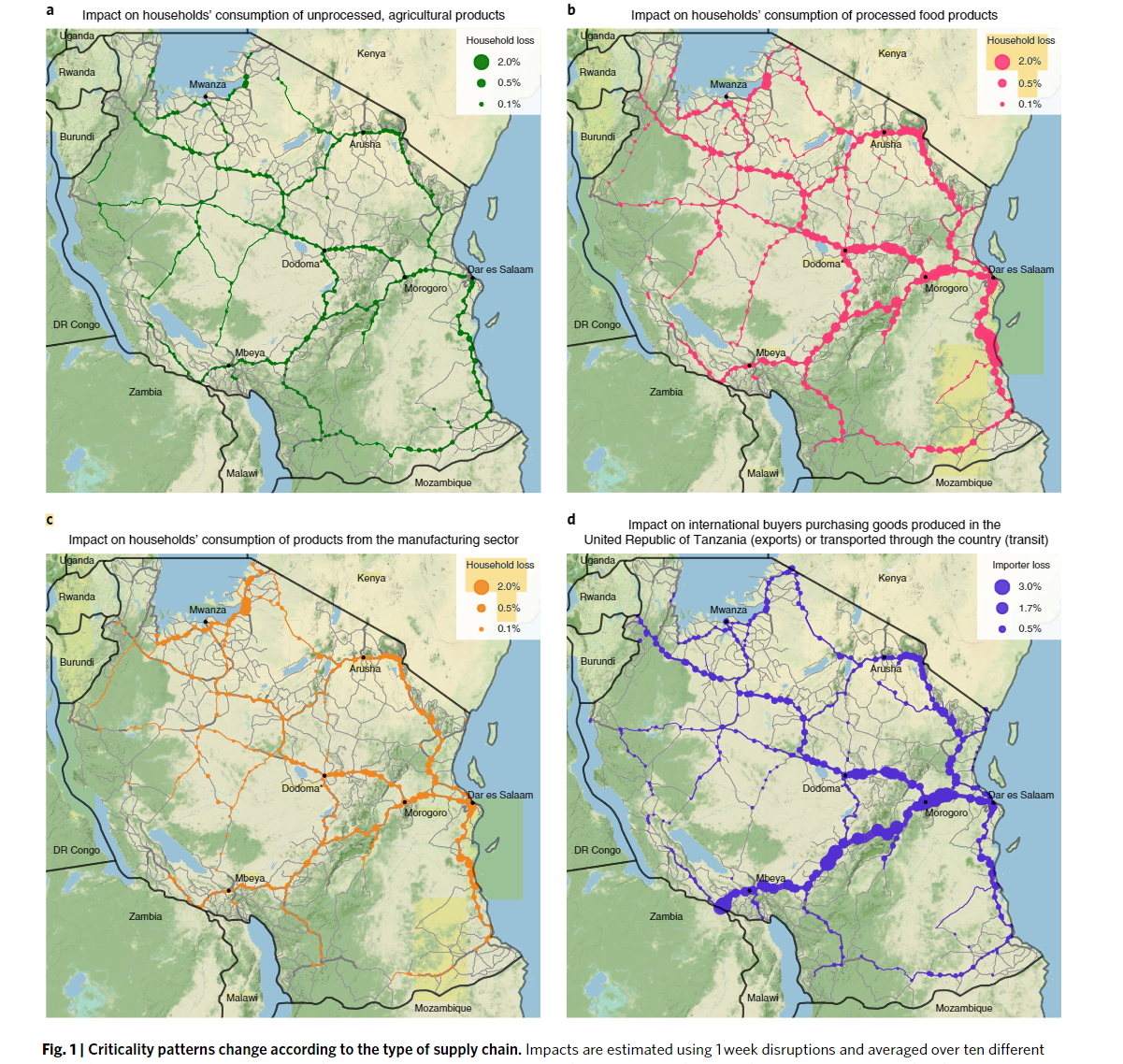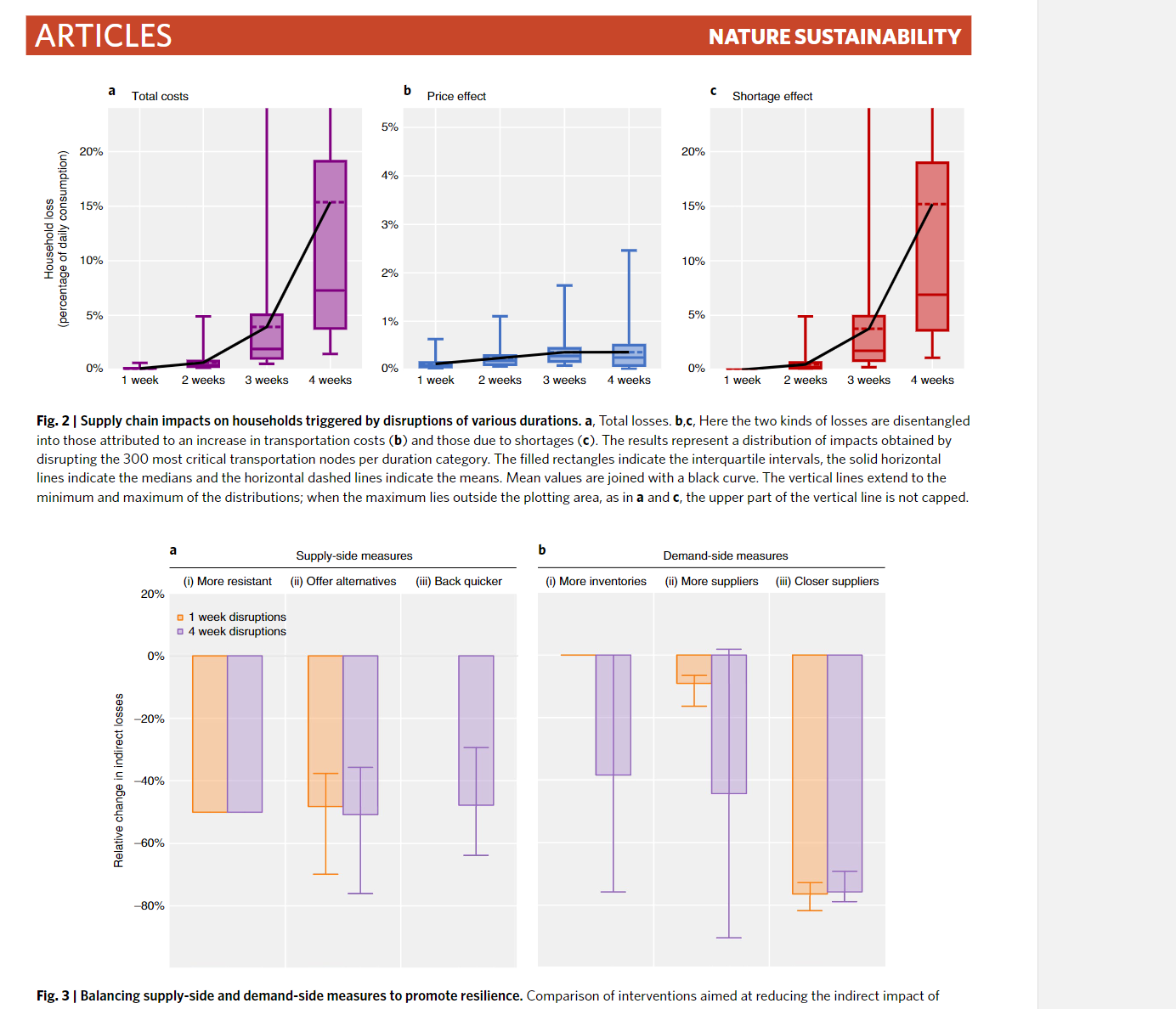Objective:
- How the disruption of transport nodes or links perturbs the flows of goods in supply chains and how these perturbations the flows of goods in supply chains
- How these perturbations then affect households, firms and trade
Case:
- United Republic of Tanzania
Methodology:
- Input-output: GTAP
- Gravity model: flow
- IO: GTAP
- Census
- Inventories: World Bank-firm survey
Findings:
- The citicality of an infrastructure asset is highly dependent on the product that is considered. For instance, the roads and bridges that are important for food may not be important for services
- Economic impacts increases non-lineraly and extremely quickly with the duration of transportation disruptions

- The resilience can be strengthened through larger inventories, a larger number of suppliers per firm and reducing the distance between suppliers and buyers (local-sourcing strategies)

Coding Reference:


